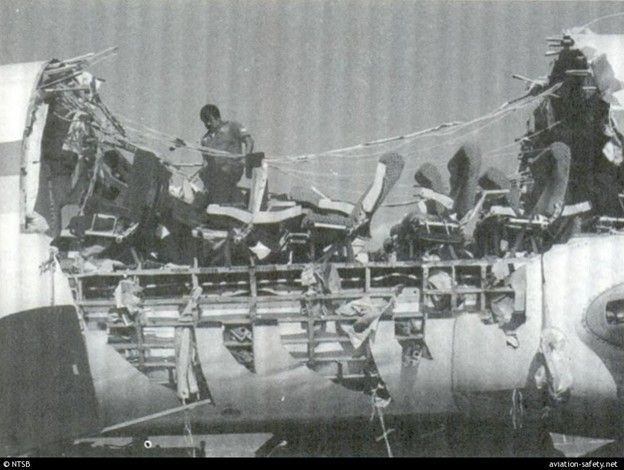ARFF Daily News
Published on:
Monday the 28th of April, 2025
We start the new week with more tragic news, this time out of Kansas City, Missouri and the senseless LODD murder of Firefighter/Paramedic Graham Hoffman who died Sunday after being stabbed in the chest by a woman he and his partner were treating and transporting to the hospital.
Firefighter Hoffman had 3 years on the KCFD and was previously a Firefighter with the Belton Fire Department.
Our condolences, thoughts and prayers go out to his family, fiancé and our Brothers and Sisters on the Kansas City and Belton Fire Departments.
May He Rest in Peace...
Be safe out there!!!
Tom
Kansas City, Missouri, firefighter paramedic stabbed to death early Sunday by patient on routine medical call
By: KSHB 41 News Staff
KANSAS CITY, Mo. — A Kansas City, Missouri, firefighter paramedic died Sunday after being stabbed in the chest by a woman his crew was taking to a hospital.
The Kansas City, Missouri, Fire Department news release states that at approximately 1:00 a.m., Firefighter Paramedic Graham Hoffman, was critically injured while transporting a patient to Saint Luke’s Hospital on Barry Road.
During transport, the patient stabbed Firefighter Hoffman, piercing his heart, according to Kansas City, Missouri, Fire Chief Ross Grundyson.
Hoffman's co-workers immediately began measures to save his life, and those continued when the ambulance reached North Kansas City Hospital.
He was placed in the Intensive Care Unit where he died.
"For a violent criminal incident to be the cause of death for a firefighter is rare in this country," said Kansas City, Missouri, Mayor Quinton Lucas at the afternoon news conference at the hospital. "He was trained to help and he was doing exactly what he was trained to do."
Hoffman, 29, served with the Kansas City, Missouri, Fire Department for about three years.
Before that, he also worked for the Belton Fire Department.
"He was a vibrant individual who loved serving the public," Kansas City, Missouri, Fire Department Chief Ross Grundyson said at a Sunday afternoon news conference.
A fire department spokesperson said Hoffman was not married, but had a girlfriend. He did not have children.
Family and friends told Fire Chief Grundyson Sunday how much Hoffman loved his job.
The Kansas City, Misssouri, Police Department is investigating Hoffman's death.
The woman who police say stabbed Hoffman was arrested and faces several charges in Clay County Court.
Shanetta Bossell, 39, is charged with first-degree murder, armed criminal action, third-degree assault and resisting arrest.
Hoffman's body was taken from the hospital to the Jackson County Medical Examiner's Office.
https://www.kshb.com/news/local-news/kcfd-firefighter-stabbed-on-routine-medical-call

FedEx cargo plane engine fire prompts emergency response at Reno airport
by Kenneth Dunn
A FedEx cargo plane experienced an engine fire prior to takeoff at the Reno-Tahoe International Airport on Thursday night, prompting a swift response from emergency services.
Authorities reported that the engine on the right side of the Boeing 757-200(F) caught fire, leading to immediate action.
As a precautionary measure, the plane was returned to the gate for a thorough investigation to ensure safety before any further operations. No injuries were reported.
A ramp supervisor who witnessed the incident said, "Upon after being pushed out from the gate on attempt to start the right engine it started smoking immediately, this is common for these types of engines due to extra fuel being in the engine... The excess smoke got concerning so all us personnel kept watching and then there was the flames, I called airport emergency to communicate to the pilots and have fire crews on standby."
Authorities have not yet confirmed the cause of the fire.
https://mynews4.com/news/local/fedex-cargo-plane-incident-at-reno-tahoe-airport-prompts-swift-fire-department-response?fbclid=IwY2xjawJ4oJpleHRuA2FlbQIxMQBicmlkETFXYW5vMWhCOTVLenR5aVBoAR4KUZULBHs8Fpk6F-B1RknZifpkuy4AnYCaMifjWi2CzkBg9yAgZjuy2v1Kfg_aem_T3KYqDwReIXrT6Ny--d2gg#

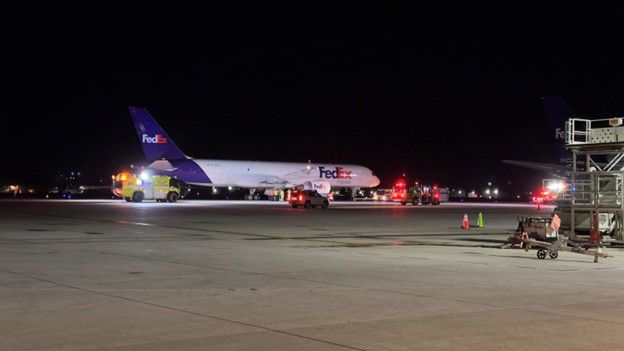
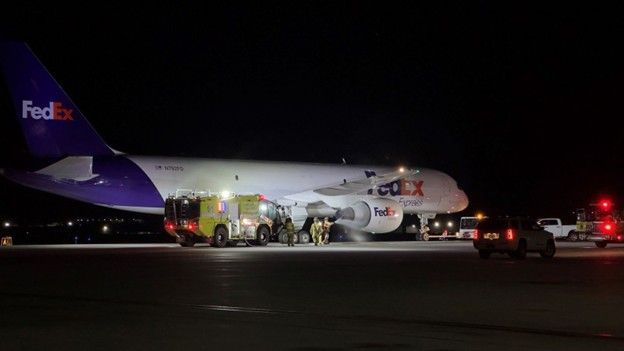
Small plane crashes in Tennessee, killing all 3 on board
The Mooney M20TN departed from Alabama and was descending into Upper Cumberland Regional Airport in White County when it crashed, officials said.
By Rebecca Cohen
A single-engine plane crashed in Tennessee on Saturday morning, killing three people on board, officials said.
The Mooney M20TN crashed south of Upper Cumberland Regional Airport in Sparta, according to a statement from the Federal Aviation Administration.
Dean Selby, the airport’s director, identified the three victims Sunday as Jonathan Braun, the pilot, and Dylan Clay Davis and Kelsie Lynn Davis, a married couple from Alabama.
Selby said the airport heard reports of an aircraft going down at approximately 11:50 a.m. Shortly after, the Memphis Air Traffic Control Center called the airport to say it had lost communication and contact with an aircraft.
The plane departed from Alabama and was on its descent into the airport when it crashed, Selby said.
Emergency management and fire and rescue workers, along with volunteers, looked for the crash site and were able to find it after the airport sent a plane up to search from the air, the director said.
Selby described the area where the plane was found as “remote.”
The Federal Aviation Administration, which said it is investigating, arrived on site a few hours after the crash, Selby said. The National Transportation Safety Board, which is leading the investigation, said it will arrive Sunday.
Sparta is about 96 miles southeast of Nashville.
A number of small planes have gone down in recent weeks, each time killing all the passengers on board.
Last month, a plane crashed into a home Brooklyn Park, Minnesota. About two weeks later, another went down in upstate New York.
Three were killed when a plane crashed into a river in Nebraska last Saturday, and four more died Sunday when a single-engine aircraft crashed in Illinois.
https://www.nbcnews.com/news/us-news/small-plane-crashes-tennessee-killing-3-board-rcna203173
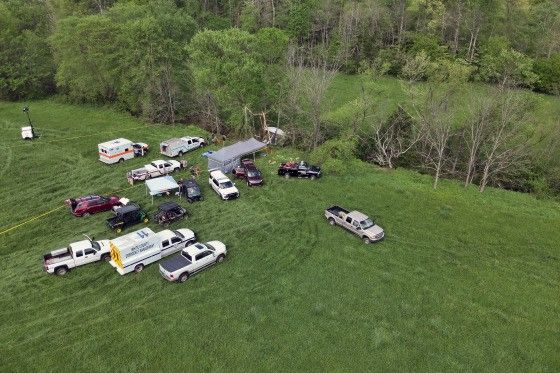
NTSB investigating why famed pilot crashed beside runway days before he was to perform at airshow
By Pete Muntean, CNN
Washington (CNN) — The investigator leading the probe into Thursday’s crash that killed champion aerobatic pilot Rob Holland at Langley Air Force Base in Virginia says he was “coming in to land on runway 8,” but it is unclear “why he lost control and impacted terrain beside the runway.”
Holland was arriving at the Hampton, Virginia base, where he was set to perform this weekend in the Air Power Over Hampton Roads airshow.
“He was just coming in just for a normal landing,” and performed no acrobatic maneuvers, National Transportation Safety Board investigator Dan Boggs said in a news conference at the base on Friday.
Despite the crash, the airshow will continue as planned.
“Over the last 24 hours I’ve gained even more of a tremendous appreciation for the aviators and professionals that orchestrate these air shows,” Air Force Col. Matthew Altman, the commander of Joint Base Langley-Eustis said in the news conference. “Based on consultation and their strong recommendation, consultation with NTSB and our team’s preparedness to execute a safe airshow, we’ve decided to proceed with the air power Hampton Roads airshow this weekend.”
Holland’s custom MXS-RH aerobatic aircraft was coming in for a landing around 11:50 a.m., Thursday when it was involved in the accident, the Federal Aviation Administration said in a statement. Only Holland was on board.
According to the NTSB’s preliminary understanding of the crash, the plane “never made contact with the runway,” and “crashed into terrain to the side of the runway,” NTSB spokesperson Sarah Sulick tells CNN.
Holland’s death has stunned the aviation world. He was the reigning US National Aerobatic Champion, a title he won 13 consecutive times, in the challenging sport of competitive aerobatic flying. Known for his exacting and innovative style, Holland often wowed airshow audiences throughout North America with maneuvers he invented himself.
“Rob was one of the most respected and inspiring aerobatic pilots in aviation history,” a post on Holland’s company’s Facebook page said. “Even with an absolutely impressive list of accomplishments, both in classical competition aerobatics and within the air show world, Rob was the most humble person with a singular goal to simply be better than he was yesterday.”
The single seat aerobatic plane was built to Holland’s specifications out of carbon fiber and capable of 16Gs plus rolls at 500 degrees per second, according to his website. He had spent more than two decades as a full-time airshow pilot.
The Experimental Aircraft Association, which hosts the annual Oshkosh, Wisconsin airshow where Holland was often a featured performer, called Holland “a trailblazer whose passion and innovation redefined the art of aerobatic flight” whose “contributions to aviation were unparalleled.”
“The world lost an extraordinary pilot, an incredible person, and a true hero who inspired countless lives,” the E3 Aviation Association posted. “With over 15,000 flight hours across more than 180 aircraft types, Rob’s skill was matched only by his boundless enthusiasm for flight.”
CNN’s Alexandra Skores contributed to this report.
https://kesq.com/news/national-world/cnn-national/2025/04/26/famed-pilot-killed-in-crash-days-before-he-was-to-perform-at-airshow/

American Airlines flight headed to Evansville makes emergency landing in Louisville
El'Agance Shemwell
EVANSVILLE, Ind. (WEVV) — An American Airlines Flight headed to Evansville from Charlotte, North Carolina, had to make an emergency landing in Louisville, Kentucky.
44News spoke to a passenger on the flight, who said they were greeted by emergency crews at the Louisville Muhammad Ali International Airport Friday evening. The passenger said they decided to drive home to Evansville from Louisville.
The reason for the emergency landing is unclear at this hour.
American Airlines Flight 5895 departed from Charlotte around 4:00 p.m. on Friday. According to the Evansville Regional Airport website, the flight will not arrive until 10:30 p.m.
44News is working to learn more about the incident.
We will provide more details as they become available.
https://www.wevv.com/news/american-airlines-flight-headed-to-evansville-makes-emergency-landing-in-louisville/article_81888672-e27b-4ae3-ae93-cff40c3c3915.html
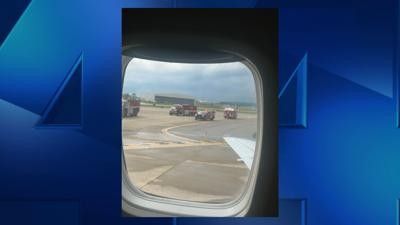
Augusta County: Small plane crash lands in field near airport after losing power
Crystal Graham
A small plane was forced to crash land in Augusta County this morning after it lost power shortly after taking off from Shenandoah Valley Airport.
Two people were on board when the plane went down in a nearby field in Weyers Cave striking a fence before coming to a stop.
Neither of the two occupants were injured in the accident that occurred at 10:45 a.m.
Virginia State Police is investigating the accident. The FAA has been notified.
https://augustafreepress.com/news/augusta-county-small-plane-crash-lands-in-field-near-airport-after-losing-power/
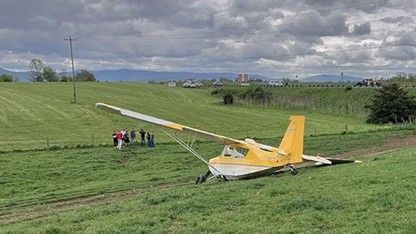
NTSB Final Report: Rotor Flight Dynamics Dominator
Total Loss Of Engine Power And Subsequent Autorotation To A Swamp, That Resulted In A Rollover
Location: Gilbert, Minnesota Accident Number: CEN25LA046
Date & Time: November 15, 2024, 16:15 Local Registration: UNREG
Aircraft: Rotor Flight Dynamics Dominator Aircraft Damage: Substantial
Defining Event: Loss of engine power (total) Injuries: 1 Serious
Flight Conducted Under: Part 91: General aviation - Personal
Analysis: The non-certificated pilot departed from the airport in the unregistered experimental gyroplane for a local area flight. Shortly after departure, the experimental 2-stroke engine sustained a total loss of engine power. The pilot initiated an autorotation to a swamp. After successfully landing the gyroplane, the pilot began the shutdown process. However, due to the “spongy and soft” ground, the gyroplane began to “wobble,” and the gyroplane rolled over to the right. The pilot was then pinned under the gyroplane, and he was unable to release the lap belt. About an hour later, he found his cellular phone and contacted first responders who were able to later extract him from the gyroplane.
The single seat gyroplane, with no airframe serial number, sustained substantial damage to the main rotor system and the empennage. Postaccident examination revealed that the gyroplane had an empty weight of about 405 pounds, that exceeded the 254-pound empty weight limit for powered ultralight vehicles. The pilot reported the gyroplane held “5 to 6 gallons” of fuel, as powered ultralight vehicles are not to exceed a 5-gallon fuel capacity per regulation. When the pilot purchased the gyroplane several months prior to the accident, it came with no documentation, and thus the maintenance history for the airframe and the engine was undetermined. The engine manufacturer has previously published a warning that states, “This engine, by its design, is subject to sudden stoppage.” As a lesson learned, the pilot suggested to have a cutting device available if an occupant is unable to activate the release mechanism for a restraint system.
Probable Cause and Findings: The National Transportation Safety Board determines the probable cause(s) of this accident to be -- A total loss of engine power and subsequent autorotation to a swamp, that resulted in a rollover. Contributing to the pilot’s delayed egression from the gyroplane, was the lack of a restraint system cutting device.
FMI: www.ntsb.gov
NTSB Final Report: Rotorway Exec 162 F
While Hover Taxiing The Helicopter Back To His Hangar After A Short Practice Flight, The Experimental Engine Lost Power
Location: Blaine, Minnesota Accident Number: CEN25LA041
Date & Time: November 15, 2024, 04:47 Local Registration: Rotorway
Aircraft: Rotorway Exec 162 F Aircraft Damage: Substantial
Defining Event: Loss of engine power (partial) Injuries: 1 None
Flight Conducted Under: Part 91: General aviation - Personal
Analysis: The pilot reported that while hover taxiing the helicopter back to his hangar after a short practice flight, the experimental engine lost power, and he was unable to maintain altitude. Due to the low altitude and the rapid loss of power, the pilot was not able to autorotate, and the helicopter impacted the ground and rolled onto its right side.
The fuselage and tail boom sustained substantial damage. Subsequent test runs of the helicopter’s experimental engine did not reveal a reason for the power loss that occurred.
Probable Cause and Findings: The National Transportation Safety Board determines the probable cause(s) of this accident to be -- A loss of engine power that resulted in a hard landing.
FMI: www.ntsb.gov
NTSB Prelim: Beech A36TC
During Takeoff, (Pilot) Heard A Loud “Pop” And Was Unsure What It Was
Location: Lititz, PA Accident Number: ERA25LA137
Date & Time: March 9, 2025, 15:30 Local Registration: N347M
Aircraft: Beech A36TC Injuries: 2 Serious, 3 Minor
Flight Conducted Under: Part 91: General aviation - Personal
On March 9, 2025, about 1530 eastern daylight time, a Beech A36TC, N347M, was substantially damaged when it was involved in an accident near Lititz, Pennsylvania. The pilot and one passenger were seriously injured, and the other three passengers sustained minor injuries. The airplane was operated as a Title 14 Code of Federal Regulations Part 91 personal flight.
According to the pilot, during takeoff, he heard a loud “pop” and was unsure what it was. He pulled the throttle back and when he realized the cabin door had opened, he thought he pushed the throttle back forward (but was not sure). He noticed the airplane’s airspeed was not increasing and immediately looked for a place to land. He was unable to recall anything that happened after that point.
A passenger sitting in the rear seat behind the pilot stated that during takeoff, “as soon as the airplane left the ground,” the front door opened. The pilot contacted the air traffic control tower and requested to return. The front seat passenger was holding the door closed. The airplane turned left, started “shaking,” and she knew the airplane was going to crash at that point.
A security camera located at an apartment complex across the street from the airport captured the airplane departing the runway and turning left. The airplane’s wings were rocking left to right and the tail of the airplane was low. The airplane then impacted several cars in a parking lot.
The wreckage was retained for further examination.
FMI: www.ntsb.gov

Today in History
37 Years ago today: On 28 April 1988 Aloha Airlines flight 243, a Boeing 737-200, suffered an explosive decompression when part of the upper forward fuselage tore away at 24,000 feet, killing 1 occupant; 94 survived the accident.
Date: Thursday 28 April 1988
Time: 13:46
Type: Boeing 737-297
Owner/operator: Aloha Airlines
Registration: N73711
MSN: 20209/152
Year of manufacture: 1969
Total airframe hrs: 35496 hours
Cycles: 89680 flights
Engine model: P&W JT8D-9A
Fatalities: Fatalities: 1 / Occupants: 95
Other fatalities: 0
Aircraft damage: Substantial, written off
Category: Accident
Location: near Maui, HI - United States of America
Phase: En route
Nature: Passenger - Scheduled
Departure airport: Hilo International Airport, HI (ITO/PHTO)
Destination airport: Honolulu International Airport, HI (HNL/PHNL)
Investigating agency: NTSB
Confidence Rating: Accident investigation report completed and information captured
Narrative:
Aloha Airlines flight 243, a Boeing 737-200, suffered an explosive decompression when part of the upper forward fuselage tore away at 24,000 feet, killing 1 occupant; 94 survived the accident.
On April 28, 1988, an Aloha Airline Boeing 737, N73711, was scheduled for a series of interisland flights in Hawaii. The crew flew three uneventful roundtrip flights, one each from Honolulu to Hilo (ITO), Kahului Airport, HI (OGG) on the island of Maui, and Kauai Island Airport (LIH). At 11:00, a scheduled first officer change took place for the remainder of the day. The crew flew from Honolulu to Maui and then from Maui to Hilo. At 13:25, flight 243 departed Hilo Airport en route to Honolulu. The first officer conducted the takeoff and en route climb to FL240 in VMC. As the airplane leveled at 24,000 feet, both pilots heard a loud "clap" or "whooshing" sound followed by a wind noise behind them. The first officer's head was jerked backward, and she stated that debris, including pieces of gray insulation, was floating in the cockpit. The captain observed that the cockpit entry door was missing and that "there was blue sky where the first-class ceiling had been." The captain immediately took over the controls of the airplane. He described the airplane attitude as rolling slightly left and right and that the flight controls felt "loose." Because of the decompression, both pilots and the air traffic controller in the observer seat donned their oxygen masks. The captain began an emergency descent. He stated that he extended the speed brakes and descended at an indicated airspeed (IAS) of 280 to 290 knots. Because of ambient noise, the pilots initially used hand signals to communicate. The first officer stated that she observed a rate of descent of 4,100 feet per minute at some point during the emergency descent. The captain also stated that he actuated the passenger oxygen switch. The passenger oxygen manual tee handle was not actuated. When the decompression occurred, all the passengers were seated and the seat belt sign was illuminated. The No. 1 flight attendant reportedly was standing at seat row 5. According to passenger observations, the flight attendant was immediately swept out of the cabin through a hole in the left side of the fuselage. The No. 2 flight attendant, standing by row 15/16, was thrown to the floor and sustained minor bruises. She was subsequently able to crawl up and down the aisle to render assistance and calm the passengers. The No. 3 flight attendant, standing at row 2, was struck in the head by debris and thrown to the floor. She suffered serious injuries. The first officer tuned the transponder to emergency code 7700 and attempted to notify Honolulu Air Route Traffic Control Center (ARTCC) that the flight was diverting to Maui. Because of the cockpit noise level, she could not hear any radio transmissions, and she was not sure if the Honolulu ARTCC heard the communication. Although Honolulu ARTCC did not receive the first officer's initial communication, the controller working flight 243 observed an emergency code 7700 transponder return about 23 nautical miles south-southeast of the Kahalui Airport, Maui. Starting at 13:48:15, the controller attempted to communicate with the flight several times without success.
When the airplane descended through 14,000 feet, the first officer switched the radio to the Maui Tower frequency. At 13:48:35, she informed the tower of the rapid decompression, declared an emergency, and stated the need for emergency equipment. The local controller instructed flight 243 to change to the Maui Sector transponder code to identify the flight and indicate to surrounding air traffic control (ATC) facilities that the flight was being handled by the Maui ATC facility. The first officer changed the transponder as requested. At 13:50:58, the local controller requested the flight to switch frequencies to approach control because the flight was outside radar coverage for the local controller. Although the request was acknowledged, Flight 243 continued to transmit on the local controller frequency. At 13:53:44, the first officer informed the local controller, "We're going to need assistance. We cannot communicate with the flight attendants. We'll need assistance for the passengers when we land." An ambulance request was not initiated as a result of this radio call. The captain stated that he began slowing the airplane as the flight approached 10,000 feet msl. He retracted the speed brakes, removed his oxygen mask, and began a gradual turn toward Maui's runway 02. At 210 knots IAS, the flightcrew could communicate verbally. Initially flaps 1 were selected, then flaps 5. When attempting to extend beyond flaps 5, the airplane became less controllable, and the captain decided to return to flaps 5 for the landing. Because the captain found the airplane becoming less controllable below 170 knots IAS, he elected to use 170 knots IAS for the approach and landing. Using the public address (PA) system and on-board interphone, the first officer attempted to communicate with the flight attendants; however, there was no response. At the command of the captain, the first officer lowered the landing gear at the normal point in the approach pattern. The main gear indicated down and locked; however, the nose gear position indicator light did not illuminate. Manual nose gear extension was selected and still the green indicator light did not illuminate; however, the red landing gear unsafe indicator light was not illuminated. After another manual attempt, the handle was placed down to complete the manual gear extension procedure. The captain said no attempt was made to use the nose gear downlock viewer because the center jumpseat was occupied and the captain believed it was urgent to land the airplane immediately. At 13:55:05, the first officer advised the tower, "We won't have a nose gear," and at 13:56:14, the crew advised the tower, "We'll need all the equipment you've got." While advancing the power levers to maneuver for the approach, the captain sensed a yawing motion and determined that the No.1 (left) engine had failed. At 170 to 200 knots IAS, he placed the No. 1 engine start switch to the "flight" position in an attempt to start the engine; there was no response. A normal descent profile was established 4 miles out on the final approach. The captain said that the airplane was "shaking a little, rocking slightly and felt springy." Flight 243 landed on runway 02 at Maui's Kahului Airport at 13:58:45. The captain said that he was able to make a normal touchdown and landing rollout. He used the No. 2 engine thrust reverser and brakes to stop the airplane. During the latter part of the rollout, the flaps were extended to 40° as required for an evacuation. An emergency evacuation was then accomplished on the runway.
PROBABLE CAUSE: "The failure of the Aloha Airlines maintenance program to detect the presence of significant disbonding and fatigue damage, which ultimately led to failure of the lap joint at S-10L and the separation of the fuselage upper lobe. Contributing to the accident were the failure of Aloha Airlines management to supervise properly its maintenance force as well as the failure of the FAA to evaluate properly the Aloha Airlines maintenance program and to assess the airline's inspection and quality control deficiencies. Also contributing to the accident were the failure of the FAA to require Airworthiness Directive 87-21-08 inspection of all the lap joints proposed by Boeing Alert Service Bulletin SB 737-53A1039 and the lack of a complete terminating action (neither generated by Boeing nor required by the FAA) after the discovery of early production difficulties in the 737 cold bond lap joint, which resulted in low bond durability, corrosion and premature fatigue cracking."
